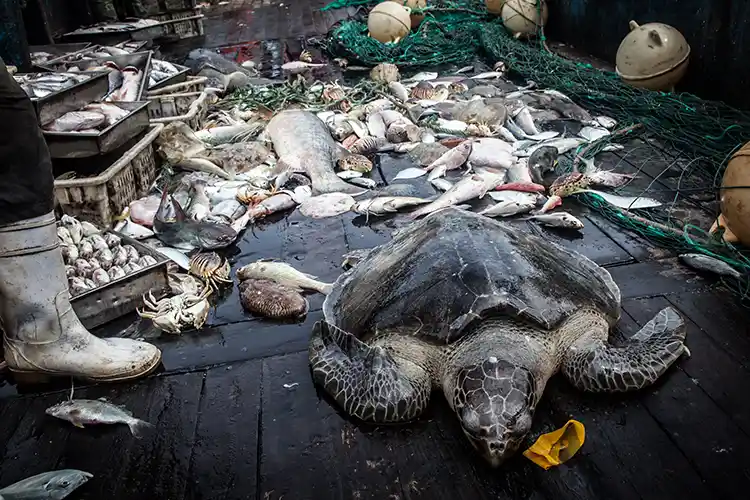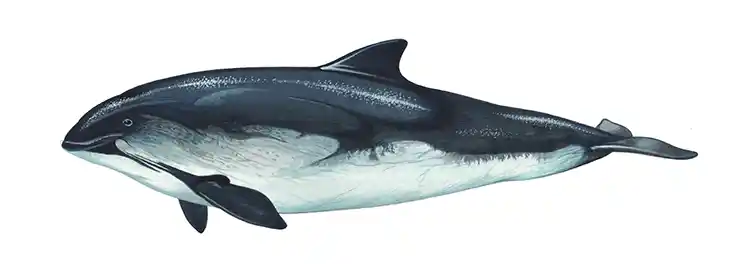
Urgent Action Needed to Eliminate Endangered Species Bycatch from UK Seafood Supply Chains
By
Millions of endangered marine species – from whales and dolphins to turtles, seabirds and sharks – are unintentionally caught each year as bycatch, severely impacting ocean biodiversity and threatening the sustainability of the UK’s seafood supply. Now, a major new report by WWF highlights how innovative technology could offer a lifeline to marine life, while strengthening seafood supply chains and restoring consumer trust.
In Not in the Net, WWF maps high-risk areas for Endangered, Threatened and Protected (ETP) species bycatch and evaluates the effectiveness, cost and benefits of emerging mitigation solutions. The report stresses the urgent need for collaboration between retailers, suppliers, policymakers and the finance sector to drive widespread adoption of these innovations.

Smart solutions for a global crisis
Among the promising innovations outlined are:
- Acoustic deterrents and net lights: Proven to cut harbour porpoise bycatch by up to 100 per cent, and turtle bycatch by 60–80 per cent.
- Hook-shielding devices: Products like Hookpods prevent seabirds from accessing baited hooks, showing a 95 per cent drop in bycatch.
- SharkGuard sensory devices: Reduce blue shark bycatch by 91 per cent and pelagic stingray by 71 per cent.
- Smart trawl systems: Using AI and patented gates, these allow non-target species to escape before entering nets.
- Pot line innovations: Sinking ropes and smart buoys help reduce entanglement risks for whales and other species.
- Jelly-FADs: Non-entangling, biodegradable fish aggregating devices deployed by tuna fisheries.
- Remote Electronic Monitoring (REM): Ensures verification of bycatch reduction efforts with accurate, independent data.
These cutting-edge methods not only protect wildlife but also offer economic benefits to fisheries, reducing gear damage, operational inefficiencies and market access risks.

Barriers and the path forward
Despite clear evidence of success, challenges persist. A lack of monitoring, limited access to finance, and slow regulatory responses hamper broader uptake. WWF’s report proposes four strategic goals:
- Strengthening policy to eliminate ETP bycatch
- Incentivising adoption of innovative mitigation tools
- Improving bycatch data collection and verification
- Enhancing research into ETP species interactions
Sophie Bauer, WWF’s Head of Food Transformation, said: ‘Protecting our oceans is vital to our fight against the destruction of nature. With the innovative solutions available, we have a technological edge that can preserve at-risk species — but widespread adoption is crucial.’
Lucinda Langton, Head of Sustainability at M&S Food, added: ‘Through our partnership with WWF, M&S is embedding cutting-edge mitigation measures into the seafood supply chain. Lasting change requires collaboration across the entire sector.’
With over three billion people globally relying on seafood as a key food source, safeguarding marine biodiversity has never been more urgent. The WWF report makes it clear: technology and teamwork offer a pathway to a more sustainable future for our oceans.




